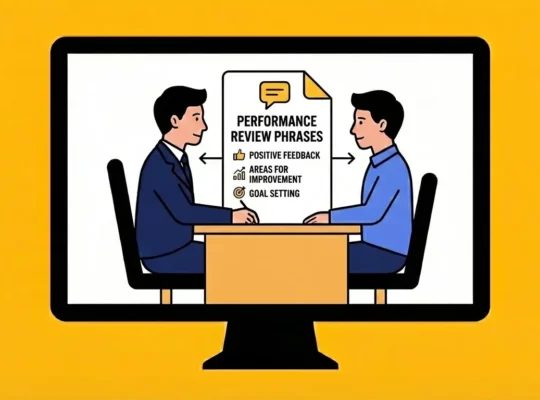In the evolving landscape of business, fostering an employee-first culture is crucial for sustainable success. At Review.jobs, we understand the immense value of prioritizing employees’ well-being, engagement, and development. An employee-first culture doesn’t just enhance productivity; it transforms the entire workplace dynamic, leading to happier employees and better business outcomes.
Employee-first Culture: Meaning and Core Principles
What is an employee-first culture?
An employee-first culture places the well-being, engagement, and development of employees at the forefront. This approach prioritizes employees over profit, recognizing that a happy, motivated workforce drives business success. By creating a positive, inclusive, and supportive work setting, organizations can reduce turnover, increase engagement, and improve overall productivity.
Core principles of an employee-first culture
1. Empathy
Empathy is the cornerstone of an employee-first culture. It involves understanding and addressing the personal and professional needs of employees. Leaders who demonstrate genuine care equally foster a more connected and motivated team. This supportive leadership approach ensures that employees feel valued and understood. For example, Salesforce’s Ohana culture is rooted in the Hawaiian concept of family, where everyone’s well-being is prioritized, leading to high levels of employee satisfaction and loyalty.
2. Trust
Building a culture of trust is essential. When employees feel safe to express their ideas and concerns, it fosters innovation and collaboration. Encouraging employee autonomy and empowering them to make decisions are key aspects of building trust within the organization. Google’s “Project Aristotle” found that psychological safety, or trust, was the most important factor in building successful teams.
3. Praise and appreciation
Regularly recognizing and rewarding employee contributions is vital. Use both formal and informal methods to celebrate achievements. Employee appreciation not only boosts morale but also reinforces positive behaviors and enhances overall employee satisfaction. According to a study by Globoforce, 78% of employees who receive recognition feel more motivated and productive.
4. Growth and development
Providing opportunities for continuous learning and professional development is crucial. Supporting career advancement and personal growth helps employees be invested in and committed to the company’s prosperity. Employee development initiatives are a fundamental part of this culture. For instance, LinkedIn offers employees the opportunity to take courses through LinkedIn Learning, which enhances skills and fosters career growth.
5. Work-life balance
Promoting policies that support flexible working arrangements and a healthy work-life balance is essential. Encouraging employees to take breaks and vacations to recharge is necessary for maintaining high levels of employee well-being and productivity. Corporations like Microsoft offer flexible work hours and remote work options, which have led to increased workplace productivity and employee satisfaction.
6. Supportive Management
Leaders should demonstrate empathy and support towards their teams. Leadership training programs that instill people-first values ensure that leaders are equipped to foster a positive work environment. For example, Adobe has a “Check-In” program that replaces annual reviews with regular, supportive feedback sessions between employees and managers.
7. Inclusive environment
An inclusive workplace where diversity is valued and respected is critical. Implement initiatives to promote inclusion and prevent discrimination, ensuring that every employee is valued and included. Businesses like Airbnb prioritize diversity and inclusion through programs and practices that foster an environment of respect and belonging.
Benefits of an employee-first culture
An employee-first culture offers numerous benefits, transforming the work environment and driving business triumph.
1. Improved employee satisfaction and retention
A focus on employee well-being leads to higher job satisfaction. Employees who feel valued are more likely to stay with the company, reducing turnover rates. This enhances employee retention and builds a stable, experienced workforce. Zappos, known for its employee-first culture, boasts an annual employee turnover rate of only 14%, significantly lower than the industry average.
2. Enhanced productivity and innovation
When employees are engaged and motivated, productivity soars. An employee-first culture fosters a creative and innovative environment where employees feel empowered to contribute their best ideas. According to a Gallup survey, companies with highly engaged workforces outperform their peers by 147% in earnings per share.
3. Better team collaboration and company reputation
An inclusive and supportive workplace promotes better team collaboration. Companies known for their employee-first culture attract top talent, enhancing their reputation and competitive edge in the market. For instance, businesses like Patagonia are renowned for their strong workplace culture, which not only attracts high-caliber talent but also enhances their brand reputation globally.
The table below features all the benefits of Employee-First Culture:
| Benefit | Description | Example |
| Improved Employee Satisfaction | Higher job satisfaction and motivation | Zappos’ low turnover rate of 14% |
| Enhanced Productivity | Increased engagement and output | Companies with high engagement outperform peers by 147% in EPS |
| Better Team Collaboration | Improved teamwork and cooperation | Salesforce’s Ohana culture |
| Reduced Turnover | Lower employee turnover rates | Baystate Health’s reduction in nurse turnover |
| Stronger Company Reputation | Attracting top-tier talent and enhancing brand reputation | Patagonia’s global reputation |
| Increased Innovation | Fostering a creative and innovative work place | Google’s “Project Aristotle” findings |
| Higher Employee Retention | Employees are more likely to stay with the company | LinkedIn Learning’s impact on retention |
| Better Work-Life Balance | Flexible working arrangements and support for personal well-being | Microsoft’s flexible work options |
| Continuous Employee Growth | Opportunities for professional growth and career advancement | LinkedIn’s LinkedIn Learning courses |
| Supportive Management | Empathetic and supportive leadership fostering a good work culture | Adobe’s “Check-In” program |
| Inclusive Workplace | Promoting diversity, inclusion, and respect | Airbnb’s diversity initiatives |
Building an Employee-first Culture: A 10-step Guide
Building an employee-first culture involves a strategic approach to transforming workplace practices and values.
1. Assess current culture
Conduct surveys and focus groups to understand the current state of the company culture. Identify areas for improvement and develop a clear action plan to address them. For instance, a survey by Gallup found that only 34% of U.S. employees are engaged at work.
2. Establish organization-wide alignment
Align the company mission with employee-first goals. Engage leaders and executives to understand the importance of appreciation and employee well-being.
3. Enhance communication
Foster open and transparent communication channels. Encourage employee feedback and listen actively to employee concerns, ensuring that their voices are heard and valued. Effective communication increases employee engagement by 47%.
4. Create feedback channels
Establish multiple channels for employees to provide feedback and share their ideas. Act on this feedback and communicate the actions taken to address concerns, reinforcing trust and transparency.
5. Develop employee feedback opportunities
Offer diverse opportunities for feedback and engage with employees meaningfully. Understanding their perspectives helps in creating more responsive and supportive working conditions.
6. Prioritize recognition
Implement recognition programs that regularly celebrate achievements. Appreciation from peers and leaders helps employees feel valued and connected to the organization. According to a study, enterprises that score in the top 20% for building a recognition-rich culture have 31% lower voluntary turnover.
7. Promote work-life balance
Introduce policies that support flexible working arrangements and work-life balance. Encourage employees to take time off and recharge, promoting overall well-being. Flexible work arrangements have been shown to increase productivity by 13%.
8. Invest in development
Provide training and growth opportunities to help employees grow their skills. Support career advancement through mentorship and coaching programs, fostering employee growth.
9. Build trust and empathy
Empower leaders with tools for supportive and empathetic interactions. Encourage one-on-one feedback sessions to make employees feel heard and valued.
10. Encourage active engagement
Deliver honest, real-time feedback and commend improvements. Promote two-way communication for a dynamic, employee-centric workplace.
Implementing an Employee-first Culture: Tips for a Smooth Transition
Successfully implementing an employee-first culture requires careful planning and ongoing commitment.
- Align leadership: Ensure that leadership is aligned with the employee-first philosophy and models the desired behaviors.
- Regularly assess impact: Continuously evaluate the impact of initiatives and be open to making adjustments.
- Communicate benefits: Clearly communicate the benefits of an employee-first culture to the entire organization.
- Use evidence-based solutions: Implement praise-focused solutions that have been proven to enhance employee motivation and alignment.
- Invest in success: Commit to an approach that has delivered marked achievement for countless ventures.
Success Story
Baystate Health
Baystate Health provides a compelling example of the benefits of an employee-first culture. After facing budget cuts, they implemented employee praise initiatives. Within a year, employees produced 15,000 moments of recognition, with 66% receiving praise. Notably, nurses who were recognized were over seven times less likely to leave, highlighting the significant impact of acknowledgement on employee retention.
FAQs
Why is it important to put employees first?
An employee-first culture creates an engaging work environment, leading to higher performance and better teamwork. It ensures that employees perceive themselves as valued, motivated, and committed to the company’s success.
How to demonstrate a people-first culture?
Live your values through meaningful acknowledgement and Employee-centric management. Consistently demonstrate care and support for employees, fostering a supportive and inclusive work environment.
How to promote a people-first strategy?
Use evidence-based, appreciation-focused solutions to enhance employee motivation and alignment. Communicate the benefits of a people-first approach to the entire organization, ensuring buy-in from all levels.
What are the Business benefits?
Enhanced productivity
Employees who regard themselves as valued and supported are more productive and engaged. An employee-first culture ensures that employees are motivated to contribute their best efforts.
Improved retention
A people-first culture reduces turnover by creating a positive work environment. Employees are more likely to stay with a company that prioritizes their well-being and development.
Better company reputation
Companies known for their employee-first culture attract top talent. A positive reputation also enhances customer loyalty and business success, as happy employees often lead to happy customers.
Key takeaway
Building an employee-first culture involves prioritizing employee well-being, fostering engagement and inclusion, recognizing contributions, supporting development, and ensuring leadership commitment. These strategies enhance employee satisfaction, retention, and overall business performance, creating a thriving and successful organization. At review.jobs, we believe that by putting employees first, companies can achieve unparalleled success and create a truly productive work atmosphere.
By embracing these principles, organizations can not only improve their internal culture but also position themselves as leaders in their industries. Investing in employees is not just a moral imperative but a strategic advantage that drives long-term success.





